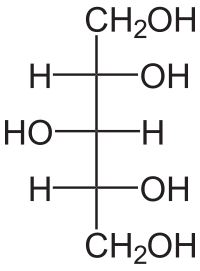
Photo from wikipedia
Industrial production of glycerol by yeast, which began during WWI in the so-called Neuberg fermentation, was the first example of metabolic engineering. However, this process, based on bisulfite addition to… Click to show full abstract
Industrial production of glycerol by yeast, which began during WWI in the so-called Neuberg fermentation, was the first example of metabolic engineering. However, this process, based on bisulfite addition to fermentation liquid, has many drawbacks and was replaced by other methods of glycerol production. Osmotolerant yeasts and other microorganisms that do not require addition of bisulfite to steer cellular metabolism towards glycerol synthesis have been discovered or engineered. Because the glycerol market is expected to reach 5 billion US$ by 2024, microbial fermentation may again become a promising way to produce glycerol. This review summarizes some problems and perspectives on the production of glycerol by natural or engineered eukaryotic and prokaryotic microorganisms.
Journal Title: Trends in biotechnology
Year Published: 2020
Link to full text (if available)
Share on Social Media: Sign Up to like & get
recommendations!